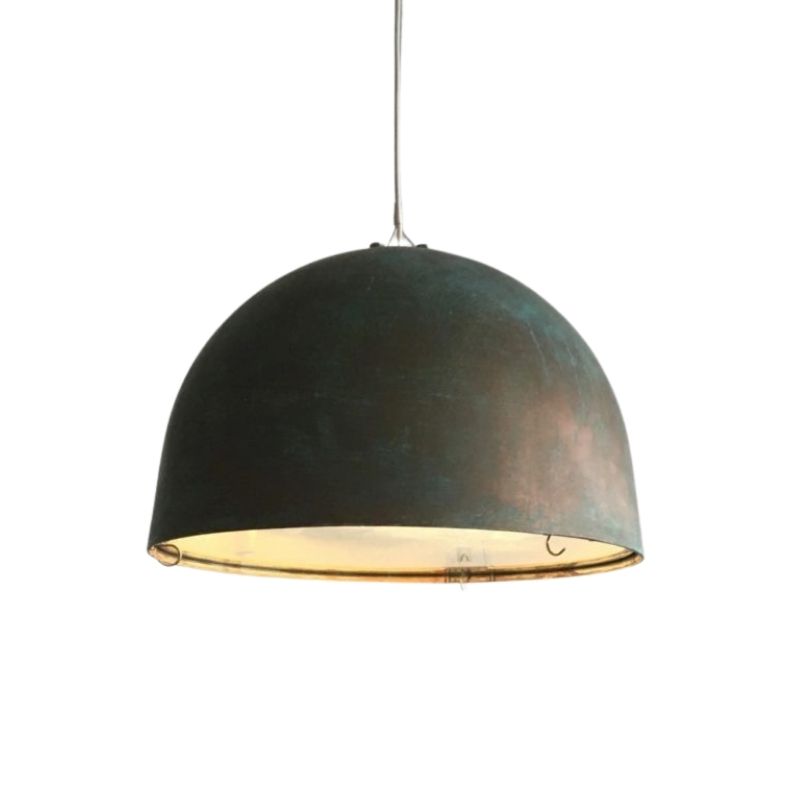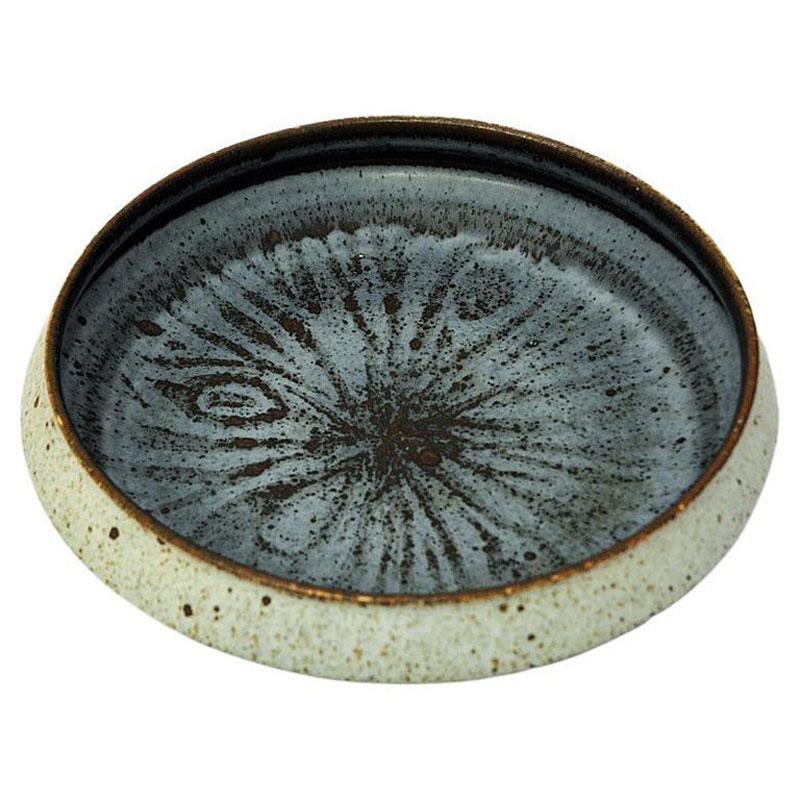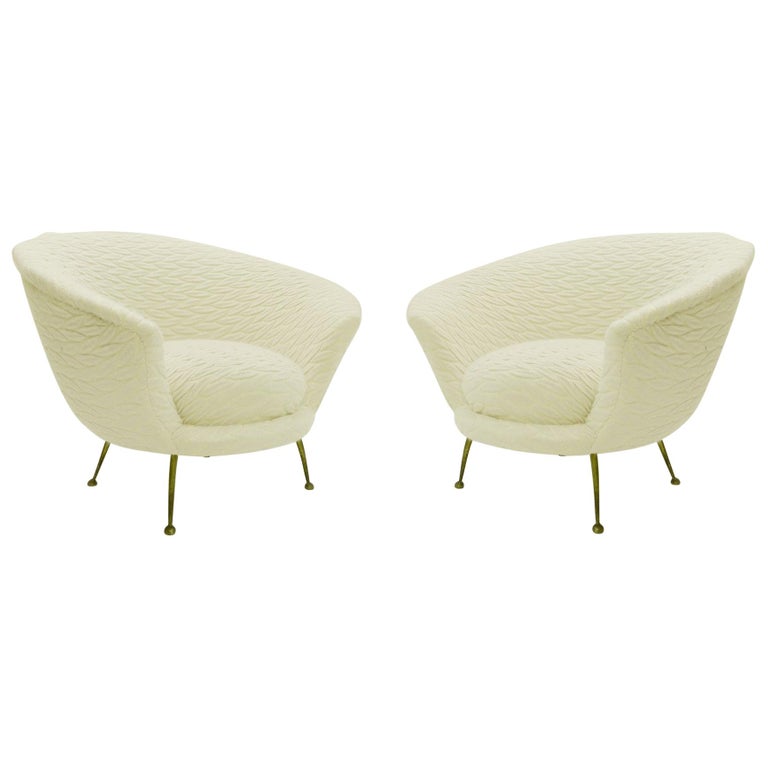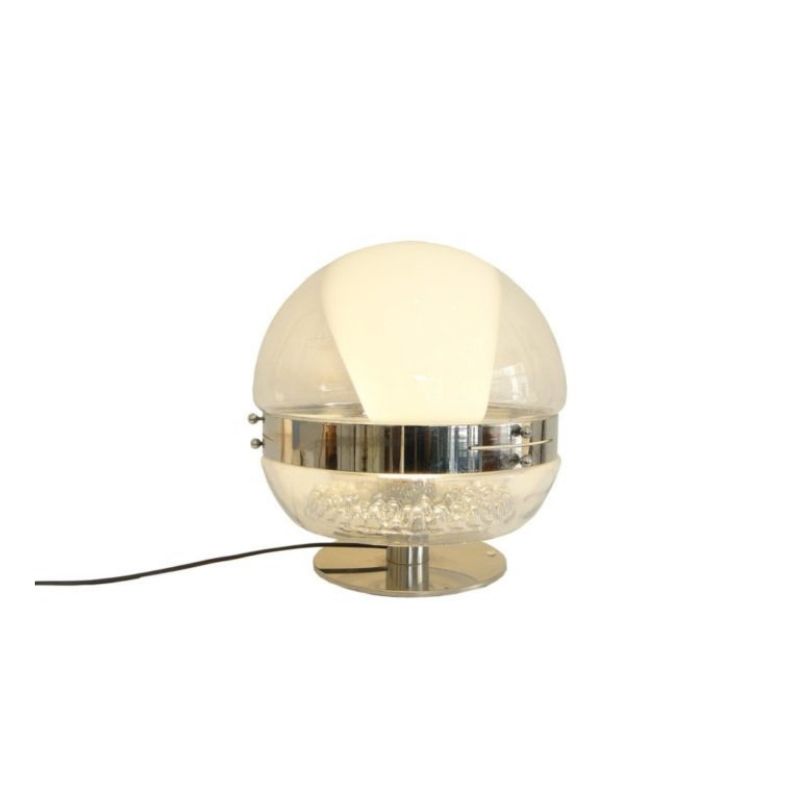Hi,
First post and it's a big one.
I'm a 3rd year trying to find peoples opinions within the idea of "the space between art and design" as opposed to vs.
I first of all pictured it as two distinct spaces and an area in the middle where all the things that don't quite fit in either sit.
Now it appears to be more like the diagram where the three primary colours overlap and the artworks/designs fall closer or further from one or the other within the different areas.
I think design in it purest form would involve almost no decision making in terms of aethetics, all that would be sorted by its function, modernism basically. Trying to find a perfect solution. This in its purest form seems impossible because every design even the most minimalist form requires the designer to make decisions about the aesthetics so all design falls in to art even if only fractionally.
On the other side of design there appears to be post modernism that is stepping away from the strict confines of modernism and is as arty as design can get. I'm not a fan but blobism is an aspect of that, memphis as well.
I'm asking my self if it's possible to fullfill both art and design in one object. I wonder how that works in terms of mass production since there is mass produced art (warhole, hurst) but it's not a common part of the art world. Or like Duchamp can anything be art if it's stuck in a gallery. I've noticed that good design is rarely noticed it just does what it does very well but bad design jars, people notice it. So do art and design juxtapose in that art is to be looked at and design just gets on with what its doing silently.
I could just be rambling, this dissertation has my head spinning.
Thanks for reading, any comments are greatly appreciated.
Design is...
function optimally reconciled for use, durability and beauty given constraints of profitable replication at a given volume.
Never forget the replication dimension. Koen awakened me to this recently in a discussion about design v. architecture and art. Design is always about making something that can be replicated, whether in small quantities or in mass production. While architecture and art CAN be made for duplication, mostly they are not. Buildings are basically engineered and space programmed in a form language with or without ornament to fit to a unique contextual constraint set at a specific location in space and intended to function over time at that location. Art pieces are crafted to be unique expressions of aesthetics intended for no function but experiencing and perhaps pleasing and teaching.
Also, never forget the profit part. I guarranty your clients, producters and consumers won't.
Finally, dissertate on something in the real world and build toward conceptualization and abstraction if you must. Art as you use it is a concept. Likewise design. By starting with concepts, you necessarily build to metaphysical constructs. IMHO, good scientists, good designers, and good artists start with phenomena that can be perceived with the senses and then try to rationalize it as best they can. Concepts are usually necessary for defining a phenonenon with enough specificity to begin to allow rational understanding of it both by you and to others you will communicate your dissertation to. These concepts are the building blocks that you will attempt to formulate into logical models. Usually phenomena, if you are thinking deeply and clearly about them, are complicated enough that it helps to symbolize the concepts for a short hand and then begin to search for logics or heuristics that articulate or model their interrelatedness. If you can model a phenomenon at this degree of abstraction, then you are beginning to understand it with some depth and can then translate this abstract expression back into language and communicate in a systematic and informed way with another intelligent and learned mind in the arts or sciences. If you leave it in a symbolized formal abstraction, you will be able to quickly communicate it to scientists, but will likely alienate many in the arts that are QA illterates.
Designers think nothing of rigorous quantation when they design an object, but I suspect they often stop short at symbolizing, quantizing and formalizing their most profound analytical thinking. Why I do not know. Perhaps because mostly they communicate with clients and producers and consumers that are formal illiterates in terms of philosophical and logical thought.
But this is all about it. Here is "it."
Design is...Pt. 2
The modernists rejected the Victorian, classical revivalism, the beaux arts, and the ornamental portion of functionalism, in pursuit of a contemporary form language suited to then contemporary means of production. This is concrete. They looked at buildings and goods and artifacts and said: these don't work anymore, given technological and cultural change. What would? To answer, they formulated new concepts, symbols, rules and heuristics that lead them to rational abstractions in their thinking and in their form languages that manifested concretely in their buildings, goods and artifacts. It did not lead to metaphysics, where anything can be anything so long as it has some discernible logic, no matter how preposterous the premises are.
Consider Venturi. He looked around at real buiildings and said these are too sterile. They are simplistic rather than elegantly simple. Their aesthetics are alienating to many consumers. This isn't working. What would? He went to history for his answers. He looked at recent history on the strip in Las Vegas and discovered that at play and at leisure contemporary humans enjoyed electicism and a combination of keenly communicated visual icons jumbled together with some messiness to relieve the visual of too much sameness.
But to confirm his contemporary findings, and to try to find if electicism had been done with any more beauty in the past than in the present, he went to Florence and many other old European cities that Americans from both high and low culture found pleasing. And he looked at how the renaissance architects and builders created these pleasing spaces. Now, you can argue that you don't like post modernism, but it is very hard to argue with the validity of Venturi's process. He started with the concrete and built toward abstraction to rationalize his and our understanding of what he viewed as more appropriate and why.
When you start with concepts and abstractions, the only way to further rationalize them is to enter metaphysics. While you may come up with something beautiful, the chances of it having any connection to function is greatly reduced.
Design is...Pt. 3
Now, you may go out and prove me utterly wrong. But I doubt it.
Believe in yourself enough to look around you and say, hmmm, what have we here actually? What is all this empirical stuff around me that I have been brainwashed by routine and education into viewing as givens
as immutable as the sun and stars. What are these houses and bowling alleys and strip malls all about really? Are products designed to market striations of Walmart, then Target then department stores and then boutiques, then Rodeo Drive really working. Will products that connect to walls for current stay the same now that scientists have proven that they can light a light bulb or run a small appliance with electromagnetic radiation at a distance of ten feet? What the hell do you care what the difference is between the concepts of art and design when there is so much real, tangible phenomena that you/we either misunderstand because yo/we take it for granted, or because new technology is changing our relationship to it? Wade into the river. Rationalize what you can touch, not what you can't.
I am not criticizing you in the least. I admire you greatly for going to school and getting the education that you need to become something very worthwhile IMHO. But I am daring you to open your eyes and return to the reality of the buildings and artifacts that caused you to want to go to get an education in this stuff in the first place. Michaelangelo, Louis Sullivan, Frank Lloyd Wright, Mies, and Michael Graves all had something in common other than great talent. They were open to the real and they were determined to redesign in some way they liked better.
It is okay to start from the dream outward, as Anais Ninn wrote, but dreams are the struggles of our minds at night trying to reconcile the conflicted realities of our days.
It is not okay to start from the abstraction outward, for that path leads to metaphysics, and unless you want to become a metaphysician instead of a designer, it is pointless.
The difference between art and design will never matter in your work. No boss, or client, will ever as you to shade your work more toward art and less toward design, or vice versa. and not force your panel of professors to have to say anything they don't already believe.
Post script: Sorry about that last paragraph...
I meant to delete it. The difference between art and design might mean a great deal to you once you are working on and thinking about real things. Art and design are concepts that could be very useful in rationalizing phenomena and processes of phenomena. But in and of themselves, they are inert.
Some additional thoughts
I find it difficult to understand why one would create a gap between for instance the colours black and white and subsequently try to bridge it with a scale of grey instead of with the more than four million colours the human eye can distinguish. It might not be a fair analogy but design and art are part of the same human capacity to creatively improve our lives beyond pure necessity, strict needs or basic conditions of survival. In order to do so, we have collectively developed a wide range of means that in scope vary from simple forms of beauty inspired by necessity, to powerful expressions unrelated to function or need, and in scale from large man made spaces to the elusive and short lived sounds of music.
I am not pretending that there is no difference between a designer and an artist but these differences are less part of the very nature of design or art than they are the result of the personal choice of an individual based on perceived or real talent, motivation and chosen education. Very much like for design and art the distinction that we perceive between the designer and the artist can only be seen if one compares the un-existing "average" designer with the "average" artist. A closer look will reveal that some artists work extremely close to design and some designers choose to exercise their profession in a area that is difficult to distinguish from art.
Division of labor, not personal choice, has professionalized quite a number of human activities and design and art did not succeed in remaining an exception. Division of labor is mainly inspired by two intertwined factors. One is efficiency and the other the fast growing volume of knowledge and skills needed to exercise successfully a particular task. The process of professionalisation has the tendency to reduce the original scope of the activity creating gaps that are left un-occupied. Allow me to step out of the design/art field with an example. The care for the sick and all reasonable attempts to make them healthy again requires a number of skills and an awful lot of knowledge. Division of labor has created a number of professions that makes these interventions possible. Most of us are familiar with that division and know the difference between a doctor GP, a surgeon, a nurse, a dentist, and orthopedist, an orthopedic surgeon, a plastic surgeon, a dietician etc. If someones face has been damaged in an accident, we know that it is the plastic surgeons task to restaure it as well as possible, but when someone is unhappy with the way his or her genetic code has influenced the shape of his or her noose, we are not sure if it is a case for a plastic surgeon or a psychiatrist. Is over-eating a medical, social, or a psychological condition? Apart from being less clair we also know that in specializing we also have created a gap between these professions.
cont.
Doctors, GPs that is, are often reminded to pay more attention to social conditions of some of their patients, not because they fail, but because their profession encourages them to prefer a medical solution over the more obvious social solution. Social workers from their side do the same and look for social solutions when an aspirin would do. Most often one chooses to solve a given problem within the means of ones own profession. Faced with an over-active child a doctor might prefer to prescribe a drug, whereas the dietician might solve the problem by reducing the huge amounts of soft drinks an juices that makes children addicted to sugar. In other words for someone with a hammer in his hands every problem looks like a nail....I guess that is also the core argument against the proliferation of weapons, both for states and individuals. Interestingly the U.S. constitution gives its citizens the right to bear arms and in formulating it this way it makes an important difference between a man bearing an arm and a gunman. Unfortunately most people bearing arms become gunman...
My contribution to this topic would be that the individual choices are more important that artificial divisions imposed by professional streamlining. Allow me one last analogy. If I walk from France into Italy or the other way around and I would listen to the local dialect, I would not be able to notice when I pass the border. The transition is seamless. The fact that the french side is educated in and encouraged to speak a more central (parisian) french and the italian side does the same creates the difference. Individually we make our own choices and we are not well served with professional divisions. A few years ago I realized that my contribution as a designer had come to a point where the scope of that contribution was too narrow for my own good. It had gone through this before and had tried to fill the gap by adding teaching to my other professional duties. Unfortunately it was too heavy a task and so I dedicated my time to give young un-experienced designers that much needed first experience and hopefully some self confidence. Living through the same experience again, I came to the conclusion that my real problem was not design related but came from too narrow a vision of what design is. A combination of a more critical attitude toward considering China as the worlds workshop, social problems in some of the regions, the believe that there is a more environmental friendly future in smaller scale production for local markets etc. made me step outside of the traditional boundaries of my profession. I am now, designing and producing on a small but innovative scale products for basically a local market.
cont.
To do so, I moved to the region that has the lowest success rate in secondary education in Quebec (Canada) This year the success rate of the local school commission is at a low 39%. Girls reach over 50% so for boys it is even lower. The people that work with me work in a pleasant environment, enjoy full freedom in choosing working hours as long as they work a minimum of 20 hrs per week and work somewhere between seven in the morning and seven at night etc. Is it design? social activism? enlightened entrepreneurship? I do not know, and I do not care either because to me it is the best use of my few talents, given the challenges I see around me. The other day I was asked to make a new stoneware lid for an old stoneware jar and a week or so later I was asked to make a statue of a catholic saint (made with as much devotion an agnostic can come up with) In both cases people around me reacted with some surprise: ...I did not know that you could do this... I can not remember if I surprised myself but I certainly did it in anticipation that it was not different from any other project and with the conviction that it was part of what is expected from me. Is it art, is it design?
Later this year I will give a key-note speech at the Cumulusconference in Bratislava about the differences between art and design and about the common ground. One of the ideas I hope to convey to the participating European design educators is that, yes there are fundamental differences but at the same time they are all situated on a sliding scale between personal or collective expression, unique, small or large quantity, technologically simple to extremely sophisticated, in search of truth or the vindication of the artificial and at the end it is like a huge field of full spectrum coloured flowers in which everybody can choose his or her own.
Art vs. Craftmanship...
From history of art by H.W. Janson.Excuse my writting(maybe missed something)i did it very fast.
Take a look at Bull's Head by Picasso,it consists of nothing but the seat and handelbars of an old bike.The materials are manmade but it's ridiculous to share the credit with the manufactureres.It was a stroke of genious to put them toguether in this unique way.What is far from simple is the leap of the imagination by which he recognized a bull's head is those unlikely objects.Do not confuse the making of a work of art with manual skills and craftmanship.Some works of art may demand a great deal of craftmanship but the most painstaking piece of art does not deserve to be called a work of art unless it involves a leap of the imagination.
While the craftsman only attemps what he knows to be possible,the artist is always driven to attempt the impossible.The artist's ways of working is resistant to any set of rules ,while the craftsman's ways encourage standardization and regularity.Istead of merely making something an artist creates.Creativity comes from "talent" wich would not be confused with aptitude.An aptitude is fairly constant an specific,is what a craftman needs to be better than average for doing something that any person can do.Creative talent is unpredictable.
Koen's comments...
indicate the following.
first, he wades into the river.
second, he trusts his senses, his intellect, his judgement, his training, and his experience enough to decide what is needed based on what he has seen and experienced in the river.
third, he designs a way to do what he thinks is needed.
fourth, he acts on what he has decided and designed, whether it is orthodox or unorthodox, relative to what has come before and what he has done before.
one through four are certainly the marks and methods of a serious designer, a serious artist, and of a civilized human being. part of it is exceptional talent, but the world is littered with talented do nothings.
koen comes from the school that the first step to a solution is to start. I would say that he starts in the river.
but most of all notice that he suggests at least twice in his life his world view shifted paradigmatically.
his response to these two shifts differed based on accrued knowledge and resources at the time. but both times, he redesigned his life, to some extent his philosophy and to great extent his work in response to what the river had shown him. this is called BEING TRULY ALIVE.
In case you missed it, he makes special mention that he resettled in a place with unimpressive education levels. what did he do? He designed a business that proves this undereducated labor pool can make profits that allow design work to go on and better person's lives with improved goods. In one felled swoop he disproved at least anecdotally that the future of economics in the Americas has to be giganticism mixed with outsourcing and services. In turn, he can now walk into any lecture hall, or ceo's office, in the world and say, see, i did it here, don't tell me, or the world, it can't be done anymore. it has already BEEN DONE again.
The done is always more persuasive to other doers than the undone. Dreams, fantasies, and metaphysics are only more peruasive to the nondoers--to those too afraid to wade into the river and design solutions.
Koen's comments...pt. 2
Goddamn I wish he had come to the USA. In the old days, our republic used to get our pick of this sort of man. Now USA must do with less of his kind and we are much the poorer for it. Had he come to USA, there would be quite a few more persons with jobs. And those persons with jobs would spin off and start other businesses and create more jobs and so on; that is how economies grow bottom up. oligopoly giganticism is not growth in most cases. it is simply cost shifting on an epic, unregulated level. it is too often parasitic exploitation of the growth that has already occurred. Oh, well, I digress. The good news is that as the North American Union emerges, for all the wrong reasons (depresentative government, consolidation of the North American energy grid, the need for poor Latin American soldiers to fight the oil wars Americans and Canadians do not want to fight, an Amero currency to replace the dollar and stiff those holding dollars, etc.) I will one day have the privilege of calling him my fellow citizen...if we can just both live long enough.
again, his students get a hell of break, whatever the tuition is they pay.
perhaps you should go up and do your post doc on how he does what he does. wade into the river with him once or twice. he apparently has been able to teach those with considerably lesser academic pedigree than you to swim. my guess is he'd have you doing the free style in record time very shortly. but even if he has his hands to full to take you on, you can study what he does, and how he does it, that's for sure.
Post script...
I beg your pardon for not focusing on the difference between art and design, but I just think I would be doing you a huge disservice to encourage you down that path. And if you are determined to go that path then there are many here more gifted and knowledgeable that I am contributing on this board.
I know Koen is going to make a speech about the difference between art and design, and that may make you feel vindicated in your choice of subject matter, but two things should jump out at you about this speech making of his:
1. He implies the art vs. design conceptualization is such a gross oversimplification of what goes on in design and in art that framing the discussion in those terms hamstrings thought more than facilitates it. I agree.
2. Koen didn't get the privilege of delivering such a lecture by contemplating the distinction between art and design. He got the privilege, because he trained in the master craftsman tradition, and then waded into the river and spent a life thinking about what had been designed, how it was designed, how it could be improved, and then rolling up his sleeves and designing attempts at improved products, or at least to products more suited to contemporary circumstances.
It is one of the ironies of professional life that great doers are eventually asked to engage in metaphysical contemplation as tribute for what they have done. The great ones usually stick to what they know about doing things in these sorts of speeches. Those in the audience often walk away unfulfilled, because the great doer did not unlock the metaphysical mysteries of doing any more than their own idle thoughts have. But always there are a few young doers in the audience, or subsequently readers of the transcript, who get it. the ultimate shaman cult in life is the secret society of doers. i say secret with tongue in cheek. they are secret only because many are too afraid to wade in the river and start.
Luke Skywalker: I'm not afraid, Master Yoda.
Master Yoda: You will be. You WILL be.
True, true, but there is no other path to join the doers than the path through fear. So walk it now.
Many thanks for all the replies.
That was more than I was expecting and it certainly gave me a lot to think about.
Since posting my last comment I have come to a similar conclusion that I need to bring the lead question back to something real. I realised that there are a thousand ways to answer the earlier question all of which would make no difference to the real situation of designing. I feel I should explain why I came upon this question. My degree is very much aimed at industrial design and it feels suffocating by its emphasis on making it work no matter how it looks. For once I tried doing a brief by the book and making something truly work in terms of functionality/production and costing. The end result fulfilled the brief but I felt unsatisfied with it and this is where my lead question came from. I think what I was basically getting at was a lack of emotional input within design, it is very cold. Whereas when I did art it was a real output of creativity and no matter how it looked or how it worked was a cathartic experience that is missing from how the design process appears.
I feel that perhaps there is something within the original question that I can focus on, what that is yet Im not sure. Perhaps looking at IMHO why design has stagnated and why so much emphasis is based on Bauhaus.
As an example and this may rile a few of you but when I look at the Breuer chair I can appreciate all that makes it a very efficient product but it isnt an attractive piece. A lot of modernism looks very aged yet few people either dont see it or are too used to saying modernism is amazing to think anything else. By that Im not saying that I do not respect modernism or that Im totally in favour of post modernism, which feels too superficial and lacks substance in general. Bear in mind that this is for a dissertation and I know that the best way for it to not be like this is to change it but the dissertation comes first unfortunately.
It appears that the hardest part of this is trying to find a handle on whats actually happening now.
Thanks to dcwilson and koen for such extensive replies. (I have to admit I understood most of what you wrote but some of it cleared right over my head)
Still feeling very lost but there seems to be a question of substance on the horizon.
If you need any help, please contact us at – info@designaddict.com









